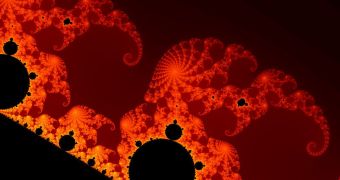Every 11 years, the Sun experiences its own "storm season," with violent explosions in its atmosphere, with an energy equivalent to a billion megatons and travelling towards Earth at about 1 million km per hour (about 0.05% the speed of light), though sometimes much faster.
Predicting such events is not easy, but now, plasma astrophysicists at the University of Warwick have found that key information about the Sun's "storm season" is being broadcast across the solar system in a fractal snapshot imprinted in the solar wind.
Fractals are geometric objects having a fine structure at arbitrarily small scales and being too irregular to be easily described in traditional Euclidean geometric language. Approximate fractals are easily found in nature. These objects display self-similar structure over an extended, but finite, scale range. Examples include clouds, snow flakes, mountains, lightning, river networks, cauliflower or broccoli and systems of blood vessels and pulmonary vessels.
It seems that the Sun itself puts out warning messages in the form of fractal signatures in the solar wind, as new observations suggest.
The team of scientists have now been able to directly tie these fractal patterns to the Sun's "storm season," and found that the fractal patterns in the solar wind occur when the Sun was at the peak of this cycle when the solar corona was at its most active, stormy and complex - sunspot activity, solar flares etc. When the corona was quieter, no fractal patterns were found in the solar wind, only general turbulence.
The fact that fractal signature comes from the complex magnetic field of the sun can greatly help astronomers figure out how the solar corona heats the solar wind and the nature of the turbulence of the Solar Wind with its implications for cosmic ray flux and space weather.
Other, more earthly applications of these findings could have an impact on the quest for fusion power, by helping physicists understand and control plasma fluctuations in fusion experiments.

 14 DAY TRIAL //
14 DAY TRIAL //